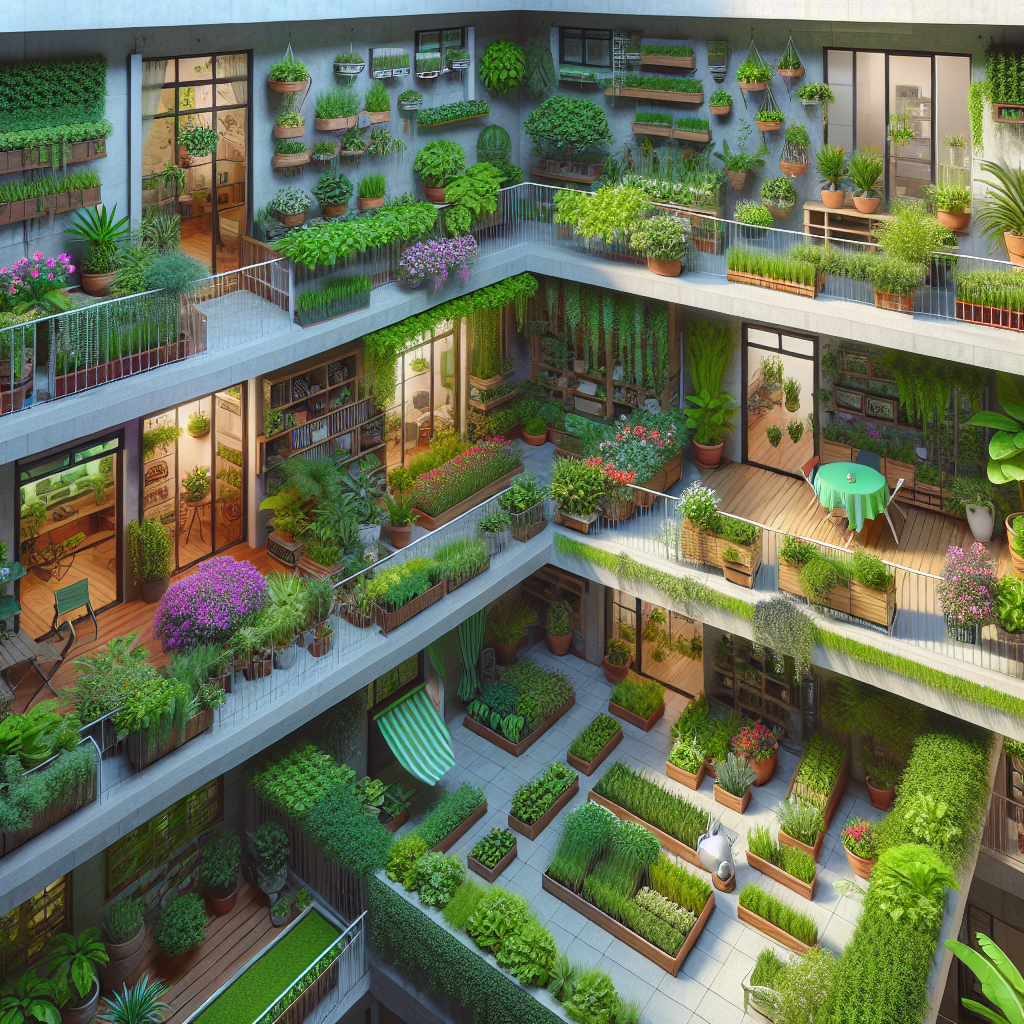# Transforming Small Spaces into Green Havens with container Gardening
In today’s urbanized world, space is often a luxury. More and more people find themselves living in compact apartments or homes with little to no yard space. But just because you lack a sprawling garden doesn’t mean you have to forgo the joys of gardening. Enter container gardening – a versatile and accessible method of cultivating plants that can transform even the smallest of spaces into lush green havens.
## The Appeal of Container Gardening
Container gardening involves growing plants in containers rather than in the ground. This technique opens up myriad possibilities for those who are constrained by space. Here’s why container gardening has gained popularity:
### 1. **Accessibility**
– **Urban Dwellers:** For city residents, gardens can be hard to come by. Balconies, rooftops, windowsills, and patios become prime spots for container gardens.
– **Mobility:** Containers can be moved around effortlessly to adapt to changing weather conditions or aesthetic preferences.
– **Control:** Gardeners have greater control over soil composition, moisture levels, and sunlight exposure.
### 2. **Versatility**
– **Diverse Plant Choices:** From herbs to flowers, vegetables to small trees – almost any plant can thrive in a container if provided with proper care.
– **Customization:** Options range from repurposed household items like old buckets and cans to specially designed pots that complement your decor.
### 3. **Health and Well-being Benefits**
– Tending to plants is known to reduce stress and improve mental well-being.
– Growing your own vegetables ensures access to fresh produce free from pesticides.
## Getting Started with Container Gardening
Starting a container garden may seem daunting at first, but with some basic knowledge and preparation, anyone can cultivate their personal green haven.
### 1. **Choosing the Right Containers**
The choice of containers depends on the plants you wish to grow and the space available:
– **Size:** Larger containers retain moisture longer but are heavier and harder to move. Smaller containers are easier to handle but dry out quickly.
– **Material:** Ceramic pots offer excellent insulation but can be brittle; plastic is lightweight but may degrade under UV light; metal heats up quickly; wood provides natural aesthetics but may rot over time unless treated.
### 2. **Selecting Soil**
Unlike ground gardening where soil quality varies widely, container gardening allows you to start with an ideal medium:
– Use high-quality potting mix which provides good aeration, drainage, and nutrients.
– Avoid using garden soil alone as it compacts easily in containers.
### 3.**Watering Practices**
Proper watering is crucial for container gardens:
– Ensure good drainage: Overwatering can lead to root rot; hence containers need drainage holes.
– Water thoroughly: Roots should receive adequate water without becoming waterlogged.
– Regular checks: Container soil dries out faster than ground soil due to limited volume—regularly check moisture levels.
### 4.**Light Requirements**
Different plants have different light needs:
– Assess your space: Observe how much sunlight different areas receive throughout the day—full sun (6+ hours), partial shade (3-6 hours), or full shade (<3 hours).
– Choose suitable plants accordingly – sun-loving tomatoes vs shade-tolerant ferns for instance.
## Creative Ideas for Small Spaces
Don’t let limited space stifle your creativity! Here are some innovative ways used by successful gardeners around the world:
### Vertical Gardens
Utilize vertical spaces by using shelves or wall-mounted planters:
– Stackable Planters: These allow multiple layers within one unit—ideal for herbs or succulents.
– Hanging Baskets: Suspend these from ceilings or balcony railings—perfect for trailing plants like ivy or strawberries.
### Window Boxes
Maximize window sills’ potential:
-Placed outside windows they provide easy access while ensuring optimal light exposure—to grow herbs like basil which flourish conveniently close at hand for cooking purposes!
### Tiered Stands
Create multi-levelled displays using tiered stands—giving dimension & depth even within tight quarters!
-Grow short-rooted edibles e.g., radishes on top tiers while reserving bottom layers bulkier crops such as peppers!
## Plant Selection: Best Choices For Beginners
Starting off strong boosts confidence – here’re beginner-friendly recommendations across various categories:
### Herbs
Herbs thrive well in containers due largely compact root systems & regular harvests limit excessive growth!
-Basil
-Mint
-Rosemary
Each adds not only visual appeal but also culinary value right from doorstep!













